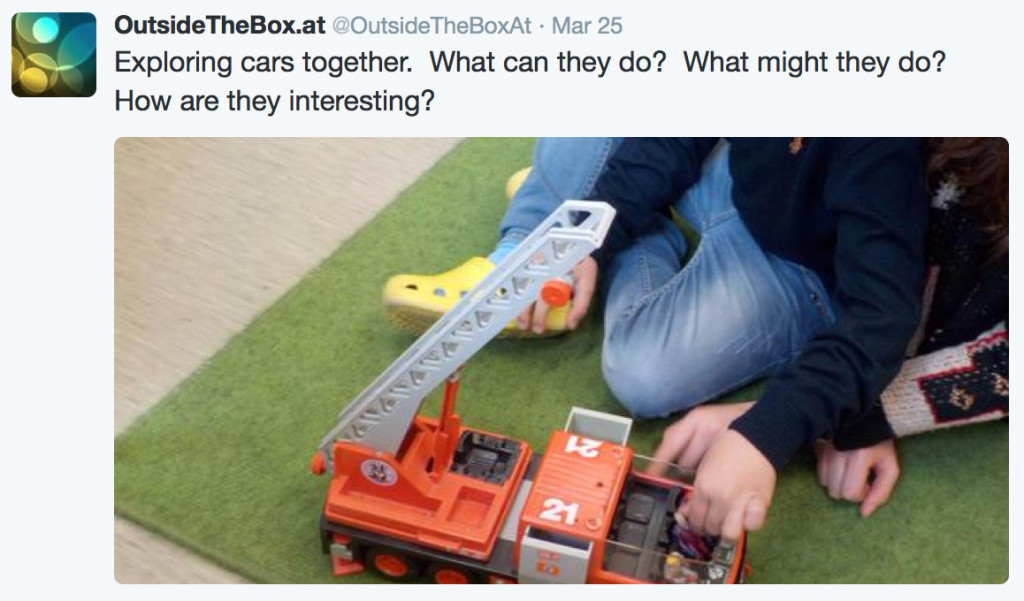Empathic Participatory Design as a Cure for Reductionism
The CHI-paper “Empathy, Participatory Design and People with Dementia” [3] presents a participatory design project at Culture Lab involving people with dementia. The authors Lindsay et al. describe how they developed personally tailored design artefacts to facilitate “safe walking” by placing emphasis on an empathic relationship between participants and designers. Frequent contact, respectful engagement and the use of rapidly produce design objects, which reduced the need for abstract thought on the participant side, were key to satisfactory project results for all stakeholders. They argue that such a modified participatory design approach can be particularly helpful for bridging the “gulf in life-experience”. This notion refers to the insight accepting that designers, who have never perceived the irrational perceptions, wandering behaviour or the fear of social stigmatisation related to a cognitive impairment, simply cannot envision how the world looks like through the eyes of a person with dementia. Therefore, the authors proposed the KITE model to facilitate learning directly from the concerned (cf. figure).
![KITE approach as described by Lindsay et al. [3:523]](http://openlab.ncl.ac.uk/hci-digitalcivics-2015/files/2015/10/KITEapproach.gif)
“The methodology in Outside The Box is radically participatory. […] firstly, we gain understanding about the lived, disabled experience. When meeting a child every second week over the course of a school year, the quality of insights into their life-world is very different to what could be elicited traditionally when focused on requirements. Through our interactions with the child, the parents and the teachers, an empathic understanding from different perspectives is emerging. Which leads to the second point: this understanding needs to translate into the design of technology.” [2:6]

However, although I regard empathy being specifically important in the context of impaired and marginalised stakeholder groups, I believe that also PD with “normal” people could benefit from it. I draw here on my personal experiences as a consultant. In projects I applied many techniques similar to those suggested in the paper: I served as a consistent point of contact for my clients and worked with them in existing groups within their familiar environments. By adopting their terminology and discussing solution proposals on the basis of concrete prompts I could create trust and satisfaction with the results. Professional business consulting has of course another object than design [1], but even in such a functional setting it becomes clear that empathy can serve as a facilitator. After all, most human beings are willing to cooperate if others approach them as peers with respect and honest interest.
References
- Thomas Binder, Giorgio De Michelis, Pelle Ehn, Giulio Jacucci, Per Linde, and Ina Wagner. 2012. What is the object of design? Proceedings of the 2012 ACM annual conference extended abstracts on Human Factors in Computing Systems Extended Abstracts – CHI EA ’12: 21. http://doi.org/10.1145/2212776.2212780
- Christopher Frauenberger. 2015. Disability and Technology A Critical Realist Perspective. Proceedings of the 17th International ACM SIGACCESS Conference on Computers & Accessibility.
- Stephen Lindsay, Katie Brittain, Daniel Jackson, Cassim Ladha, Karim Ladha, and Patrick Olivier. 2012. Empathy, participatory design and people with dementia. Proceedings of the 2012 ACM annual conference on Human Factors in Computing Systems – CHI ’12: 521. http://doi.org/10.1145/2207676.2207749
A “good example of involving people in a design process”
For this week’s task I chose “Never Too Old: Engaging Retired People Inventing the Future with MaKey MaKey” by Rogers et al. In my opinion it is noteworthy because it brings a rather unusual user group (older people) into the focus of interaction design and investigates them in detail as a source of inspiration for future technologies. Even if the study only used pre-existing technology (MaKey MaKey), it provides many valuable insights on how technology is and can be experienced at an older age.
Leave a Reply Cancel reply
You must be logged in to post a comment.